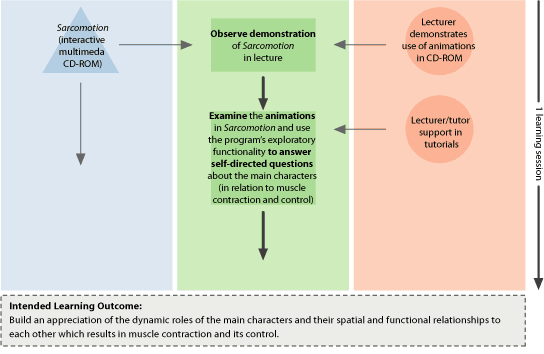|
ACCESSIBLE RESOURCES
The resources in the Sarcomotion program consist
of text-based answers to questions, illustrated with diagrams
or animated sequences. Some questions are answered simply
by an animation alone. Students access these as their interest
in each of the characters in the animation is aroused. There
is no prescribed order in which these resources are to be
accessed.
There is also a scale bar which is an animation which takes
students from the molecular to the macroscopic and back again.
Students wanting to follow up on more detail would have to
resort to textbooks but there are no specific references given
in the program.
RESOURCES IN CONTEXT
I believe it is important because it was constructed after
brainstorming with tutors and asking, "What do students
ask about muscle contraction? What confuses them, what do
they want to know?" The resources therefore are pared
down and are focussed on the student perceptions of difficulties
rather than a content-driven list of all possible information.
VARYING THE RESOURCE SET
Originally we had web-based resources which provided more
detail about other aspects of muscle but we took these out
fairly early as they were cumbersome and overwhelming to students,
and needed constant checking and updating. Sarcomotion as
it is needs its on-board resources.
|
